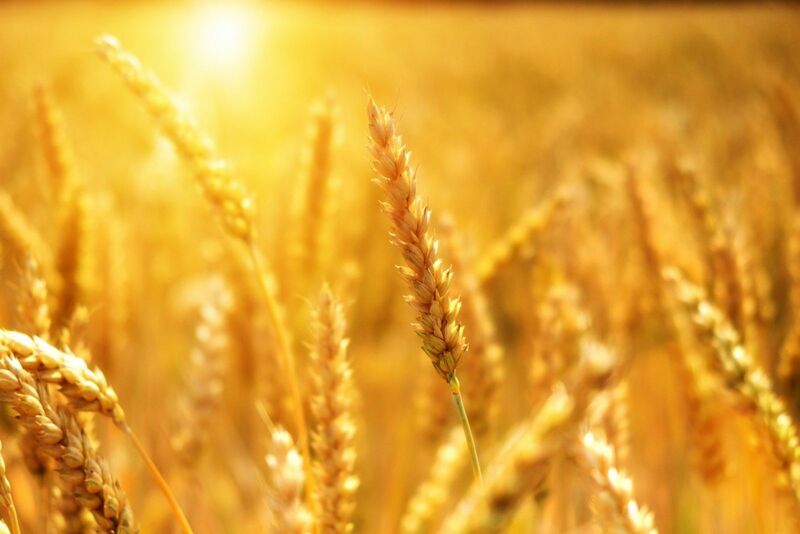
Grains feed and increasingly power the world. The U.S. is the world’s leading corn producer and a top soybean producer. Corn is a primary ingredient in ethanol; the biofuel refiners blend corn with gasoline to curb emissions. Soybeans are increasingly processed into biodiesel fuel.
The grain sector includes corn, soybeans, wheat, oats, and rice futures. While oat prices edged higher in 2023, the other grains and oilseeds posted double-digit percentage losses for the year.
As we move toward the 2024 crop year, the weather and the ongoing war in Europe’s breadbasket will determine the path of least resistance of prices. Traditional energy prices will also influence the demand side of the grain and oilseed’s fundamental equations, which remain tight despite the declines from the 2022 highs.
On Friday, January 12, 2024, the USDA released its first World Agricultural Supply and Demand Estimates Report this year. The full text is available through this link. I reached out to Sal Gilberte, the founder of the Teucrium family of agricultural ETF products, including the CORN, SOYB, and WEAT ETFs. Sal told me:
The widely anticipated January 12, 2024, WASDE and corresponding Quarterly Grain Stock Estimates release was even more bearish than analysts had anticipated. Larger stocks of all grains and higher production estimates based largely upon increased per acre yields in the United States raised overall global grain inventories and marked the first time in at least three years that the total global combined production of wheat, coarse grains, and milled rice exceeded total use on an annual basis. Wheat, when taken in isolation, was the outlier with global wheat demand projected to outstrip supply by about 1.4%, or around 11 million metric tons. Global grain prices will continue to be under pressure until we get deeper into the Southern Hemisphere’s harvest season, at which time some estimates for soybean and corn production, especially in South America, have the potential for downward revisions. Until that time traders will have no incentive to run contrary to the USDAs latest estimates of more than adequate global supplies of all grains.
While the January WASDE was bearish, Sal points out that wheat is moving into a fundamental deficit. Moreover, with the 2024 crop year on the horizon, the weather across the fertile worldwide regions will determine the path of least resistance of prices. We are moving towards the time of the year when uncertainty over the annual crop peaks.
Beans and bean products fall- Corn declines over 30%
The bearish January WASDE report followed on the heels of 2023 declines:
- CBOT soybean futures fell 15.9% in 2023.
- CBOT soybean meal dropped 19.3%, and CBOT soybean oil futures moved 25% lower.
- CBOT corn led the grain and oilseed sector lower with a 30.5% decline.
After reaching the highest prices since 2012 in 2022, corn, soybean, and soybean meal futures plunged. Soybean oil rallied to a new record peak in 2022 before moving appreciably lower from April 2022 through the end of 2023.
Three wheat futures were down over 20% in 2023
CBOT soft red winter wheat, KCBT hard red winter wheat, and MGE spring wheat prices also posted significant losses in 2023:
- CBOT wheat futures fell 20.7%.
- KCBT wheat futures dropped 27.7%.
- MGE wheat futures dropped nearly 23%.
The KCBT-CBOT wheat spread fell from a record high to below the long-term norm, indicating declining supply and price fears throughout 2023.
Oats were higher, while rice futures edged lower
The only grain product that moved higher in 2023 was the oats futures market, with a 5% gain. Rough rice futures fell 4.1% in the year ending on December 29, 2023.
Meanwhile, in mid-January 2024, soybeans, soybean meal, corn, CBOT, KCBT, MGE wheat, and oat futures were lower than the closing levels of December 29, 2023. Rice and soybean oil futures were slightly higher on January 12, 2024.
The weather is critical for the 2024 crop
The critical factor for the path of least resistance for the agricultural products that feed and increasingly power the world in 2024 will be the weather. Floods, droughts, dramatic weather, other geopolitical logistical events, or crop diseases can cause production to decline.
Meanwhile, the worldwide population is growing each year, reaching over eight billion in early 2024. More mouths to feed and lives to power means supply must keep pace with the increasing demand. Therefore, since Mother Nature determines the weather conditions, she is the primary factor for the already tight fundamental supply and demand equations for the grain and oilseed markets for the 2024 crop year.
Ukraine remains a bullish factor
Aside from Mother Nature’s critical role, the manmade war in Ukraine could impact the 2024 crop. As Russia and Ukraine continue to battle, the fertile soil in Europe’s breadbasket remains a war zone. Moreover, the Black Sea Ports is the crucial logistical transportation hub for Ukrainian and Russian wheat and other agricultural products. The ongoing conflict could weigh on output, sending prices higher over the coming year.
The most direct routes for risk positions in grain and oilseed markets are the liquid futures and futures options on the Chicago Mercantile Exchange’s CBOT and other divisions. The Teucrium CORN, WEAT, and SOYB products track portfolios of three actively traded corn, wheat, and soybean futures higher and lower. The portfolio approach mitigates roll risk in the volatile agricultural futures markets.
After falling from the 2022 highs, grain prices could rally over the coming months as uncertainty over the 2024 crop year’s output peaks in spring. Now could be the perfect time to begin building long positions. However, the trend is always your best friend in any market, and it remains bearish for most agricultural commodities. Therefore, leave plenty of room to add on further declines as prices tend to fall to levels that defy rational, logical, and reasonable levels during bearish trends.
The ongoing war in Ukraine and the uncertainty over the 2024 crop are compelling reasons to add grains and oilseeds to your portfolio. Based on the price action over the past years, the current price levels could limit downside risks, with the potential for explosive gains.
On the date of publication, Andrew Hecht did not have (either directly or indirectly) positions in any of the securities mentioned in this article. All information and data in this article is solely for informational purposes. For more information please view the Barchart Disclosure Policy here.






